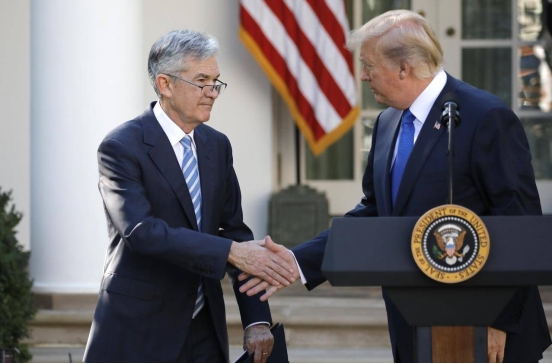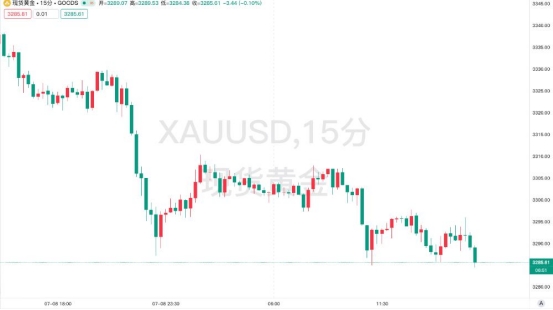Trump's tariff stick is still hanging in the balance, Powell has a "perfect excuse" to maintain high interest rates, and gold is under pressure to fall
- 2025年7月11日
- Posted by: Macro
- Category: News

On July 7, US President Trump signed an executive order to postpone the effective date of "reciprocal tariffs" on 14 countries including Japan and South Korea from July 9 to August 1, and announced the specific tariff rate (25%-40%). Although this policy adjustment gives countries a three-week buffer period, it clearly requires the other party to reach a trade agreement before August 1, otherwise they will face higher tariffs. Affected by this, the Tokyo Stock Exchange Nikkei 225 Index fell 1.2% on July 8, and the share prices of Toyota, Honda and other automakers fell by more than 4%.

1. Powell’s “perfect excuse”: Tariff uncertainty becomes a roadblock to rate cuts
The Fed's attitude towards Trump's tariff policy has become the focus of the market. Powell has said many times before that it is necessary to observe the actual impact of tariffs on inflation before deciding whether to cut interest rates. The latest market data shows that the yield on the 10-year US Treasury bond rose to 4.2%, a high of more than two weeks, and the US dollar index was reported at 97.514 in the Asian session on July 9, up 0.03% from the previous trading day. Wall Street analysts pointed out that the repetition of Trump's tariff policy has made it difficult for companies to formulate pricing strategies, resulting in delayed inflation data, which provides a "perfect excuse" for the Fed to keep interest rates unchanged. UBS predicts that if tariffs eventually stabilize at around 15%, the US economy may experience mild stagflation, further weakening the need for interest rate cuts.
2. The gold market is under pressure and is dominated by short-term short positions
Dragged down by trade optimism and a stronger dollar, international spot gold fell below the key psychological mark of $3,300 per ounce in the early Asian session on July 9, hitting a low of $3,284.64, a daily drop of 0.95%.


The current market has significant differences in the trend of gold. Citigroup released a report on July 2, saying that as the geopolitical risks in the Middle East cool down and the global economic growth prospects improve, the gold price is expected to fall back to $2,500-2,700 per ounce in the second half of 2026. However, institutions such as Goldman Sachs and JPMorgan Chase still maintain a bullish stance. Goldman Sachs expects the gold price to rise to $3,700 by the end of 2025, and JPMorgan Chase even predicts that the gold price may exceed $6,000 in 2029. This divergence reflects the market's different interpretations of trade negotiations, Federal Reserve policies and geopolitics.
IV. Key nodes in the future: The implementation of tariffs on August 1 and the game between the Federal Reserve's policies
The progress of negotiations before the tariffs take effect on August 1 will be an important catalyst for gold prices. If major trading partners such as the United States, Europe, Japan and South Korea reach an agreement before the deadline, market risk appetite may further rebound, pushing gold prices down; on the contrary, if the negotiations break down or the geopolitical situation changes suddenly (such as the traffic volume in the Strait of Hormuz drops again), gold is expected to rebound quickly. In addition, the US PPI data and the minutes of the Federal Reserve meeting released this week will provide new guidance for the market. If the inflation data exceeds expectations or the Federal Reserve sends a dovish signal, it may ease the short-term pressure on gold.
